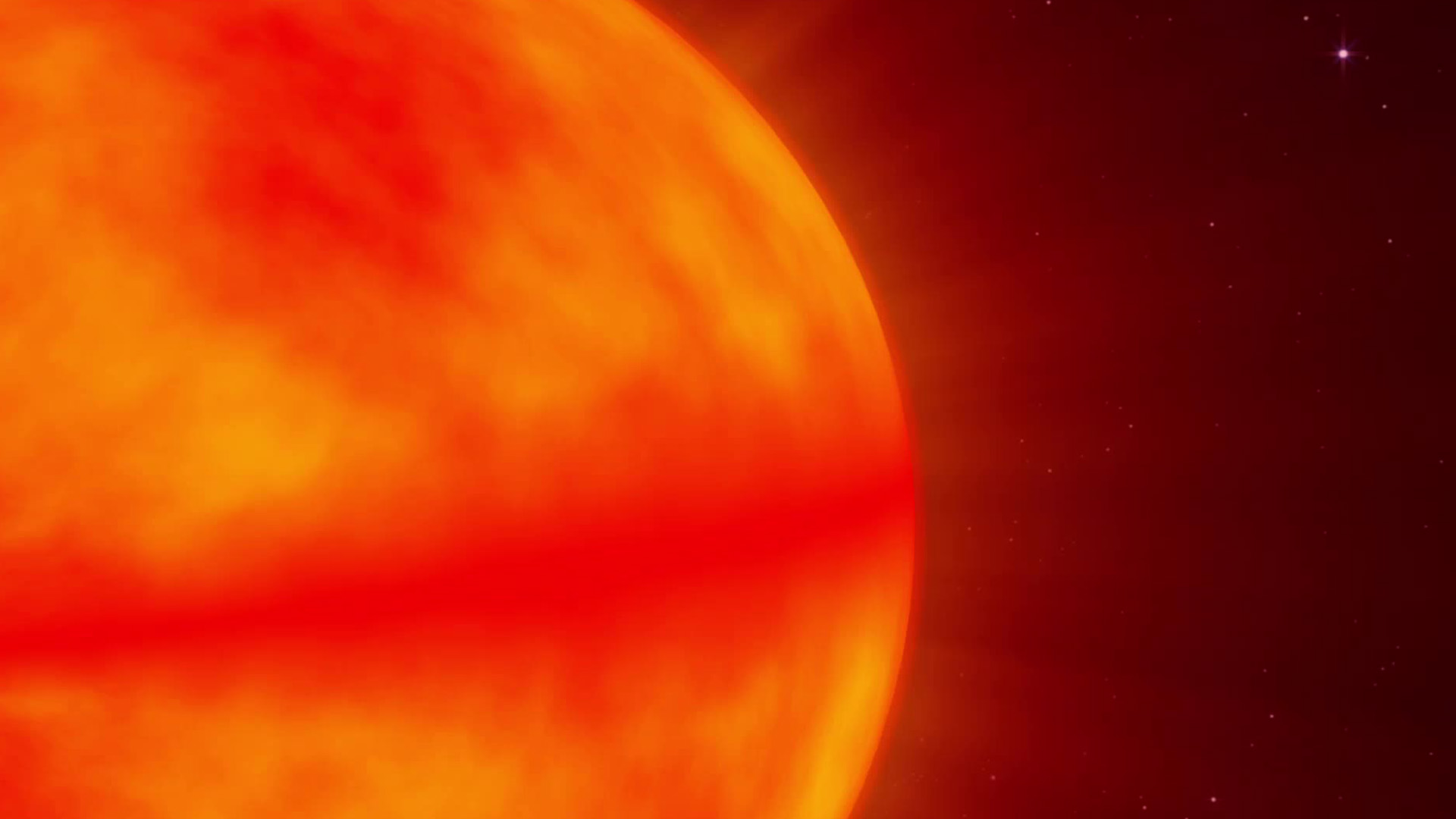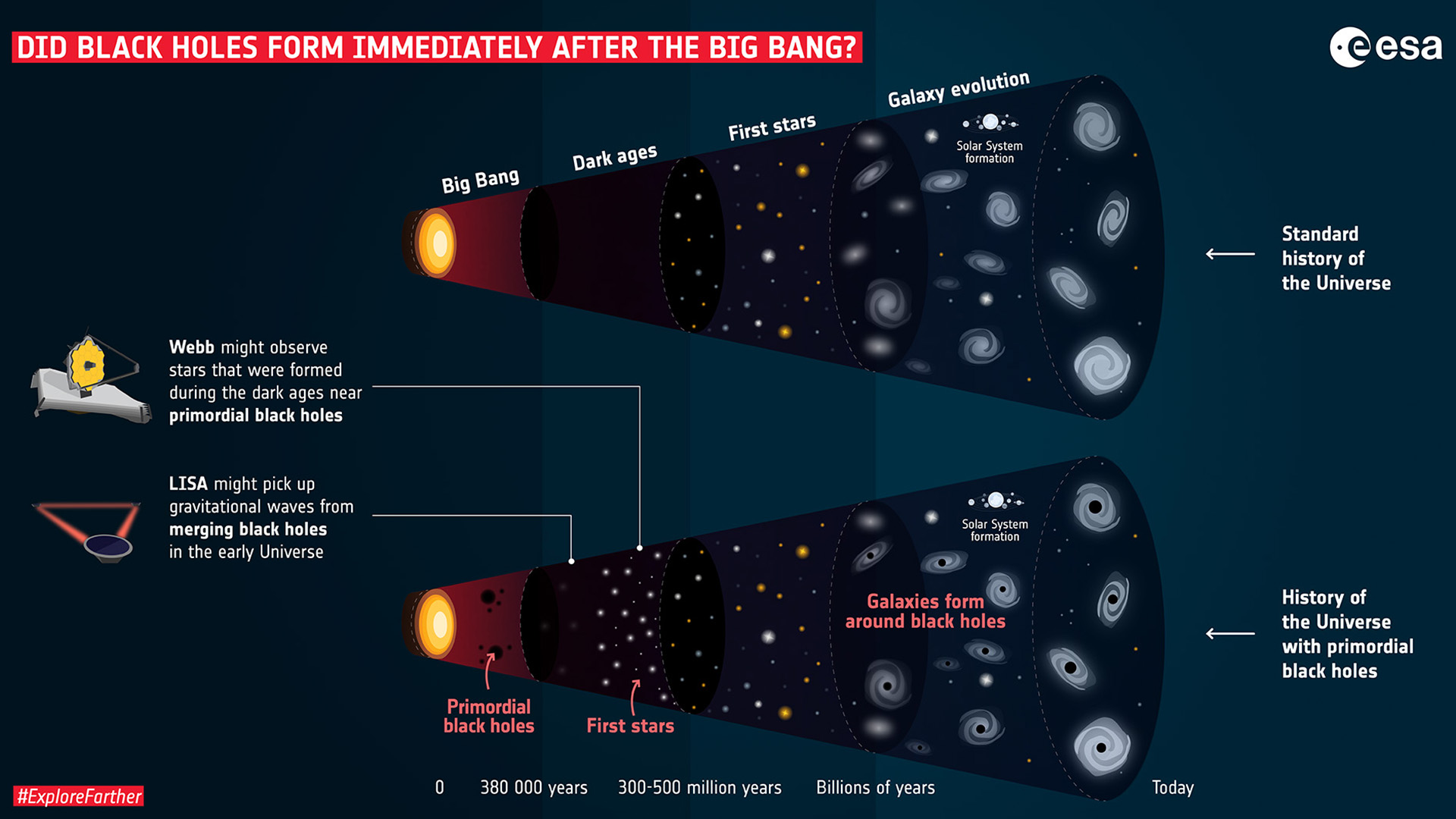
A small number of primordial black holes that went speeding through the universe just moments after the Big Bang may have been captured by stars — and these ancient black holes may still lurk in those stars' hearts today, new research theorizes.
Detecting these hypothetical black holes — which would have formed as hot, dense clumps of matter that collapsed in the first second after the universe's birth — could help nail down theories about the early universe and black hole formation. However, finding the small fraction of stars that managed to snag a fast-moving black hole poses some challenges, the study authors said.
"We think that primordial black holes, if they exist, should typically traverse the galaxy with enormous speed," lead study author Earl Bellinger, an astrophysicist at the Max Planck Institute for Astrophysics in Germany, told Live Science in an email. "If they are to encounter a star, then they most likely just pass right through the star like a bullet. Yet, a small subset of these black holes, the ones that are traveling slowly, would have a chance to be captured by a star. And if they do, we think we might be able to find them."
According to Bellinger and his colleagues, who published a paper discussing this theory Dec. 13 in The Astrophysical Journal, two things would happen if these theoretical mini black holes were snared by a star.
"The first possibility is that the black hole is so small that it does not affect the star at all," Bellinger said. "Very-low-mass black holes can't even double their mass over the lifetime of the Universe, even when embedded in the all-you-can-eat buffet that is the interior of a star.
"The second possibility is that the black hole is massive enough to grow efficiently by consuming the star, " Bellinger added.

Are red stragglers actually black hole-powered Hawking stars?
Primordial black holes are hypothesized to have masses as low as 100,000 times less than that of a paper clip, but larger examples — approaching the mass of an asteroid or a dwarf planet — could still create visible effects in the stars that trap them as the black holes greedily consume stellar material over millions of years.
In such a case of "black hole cannibalism," as Bellinger called it, the primordial black hole would devour the star from the inside out, causing the star's core to churn and emit extra energy. This would cause the star to swell up like a red giant star, but without the increase in temperature that occurs when stars like the sun undergo this process as they exhaust the hydrogen fueling nuclear fusion in their cores. These cool red giants are called "red stragglers," and astronomers have spotted around 500 of them.
The team has determined that these red stragglers are potential "Hawking star" candidates, or stars powered by small black holes at their cores, just as legendary physicist Stephen Hawking first suggested in a 1971 paper.
The presence of a black hole at the heart of Hawking stars could explain why, even though scientists have a good handle on stellar evolution, the evolutionary paths of red stragglers are difficult to chart. By looking at how red stragglers pulse and vibrate, astronomers could potentially determine if this feasting process is ongoing within these stars.
If primordial black holes do exist, they could pervade the universe — including our own cosmic neighborhood, the researchers added. These objects’ high speeds and exceptionally small sizes may explain why they have eluded scientists thus far.
"Finding a black hole is hard in the first place, and that is with a typical black hole having masses many times the mass of our sun. Now we're talking about a black hole with the mass of an asteroid and the size of a hydrogen atom!" Bellinger said. "We think most primordial black holes would be outside stars, wandering the galaxy. On average, there would probably be one within the solar system at any given time."
The team now intends to further investigate how black holes could eat stars from within and use this information to observe the pulsations of their Hawking star candidates and determine whether it is likely that they host black holes at their cores.







